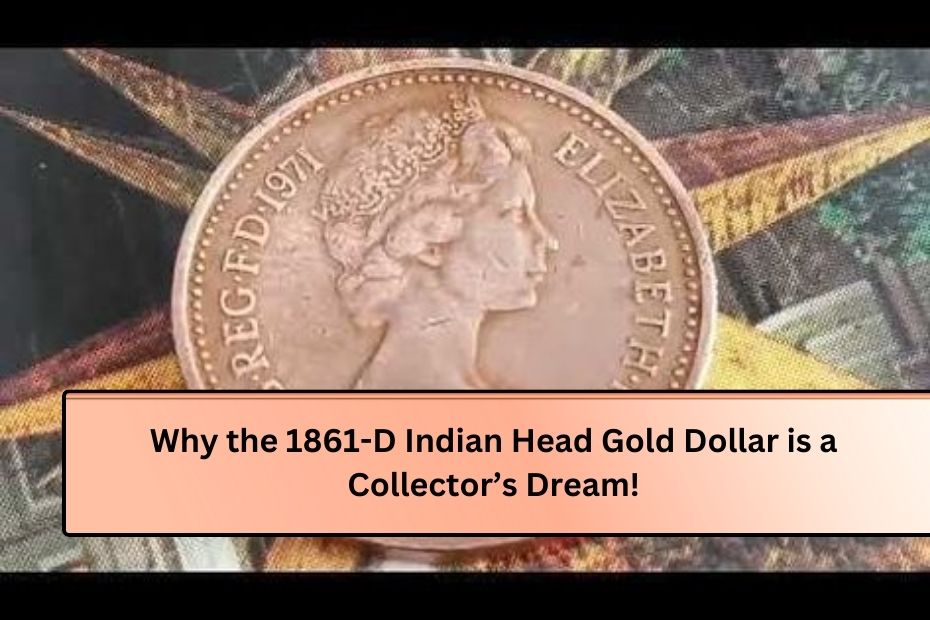When it comes to coins, many people think about how they are graded. Grading tells collectors how good or bad a coin is. In this case, we’re looking at a unique coin called the 1861-D Indian Head gold dollar. This coin has a special story because its grade is not just due to wear and tear. Instead, it has a mistake made during its production at the Mint. Let’s dive into what makes this coin so special!
| Feature | Details |
|---|---|
| Coin Name | 1861-D Indian Head Gold Dollar |
| Grading | PCGS About Uncirculated Details, Planchet Flaw |
| Mint Error | Shallow, noncontiguous planchet void |
| Historical Context | Struck solely by the Confederate States of America |
| Appearance | Warm honey-olive and reddish-rose colors; satiny texture with subtle reflective tendencies |
| Auction Price | Sold for $26,400 at Stack’s Bowers’ Aug. 13 Rarities Night session |
| Significance | Unique piece of American history; highly sought after by collectors |
| Production Year | 1861 |
| Mint Location | Dahlonega Mint (D) |
What is Coin Grading?
Coin grading is a system that helps collectors understand the condition of a coin. It ranges from poor to perfect. For example, a coin that’s been heavily used and has a lot of scratches may receive a lower grade. On the other hand, a coin that looks almost new will get a higher grade.
Grading is important for collectors because it helps them know how much a coin is worth. The higher the grade, the more valuable the coin can be. Coins are graded by different organizations, with one of the most respected being the Professional Coin Grading Service (PCGS).
The 1861-D Indian Head Gold Dollar: A Special Coin
The 1861-D Indian Head gold dollar is not just any coin; it’s a part of American history. This coin was made during a time of great conflict in the United States. Here are some key points about the coin:
- Mint Error: Unlike many coins that get lower grades due to damage, this coin has a grade because of a Mint error. This means the mistake happened when the coin was made, not because someone dropped it or scratched it later.
- Grading: It received a grade of PCGS About Uncirculated Details, Planchet Flaw. This means it was almost perfect, but it has a flaw caused by the way it was made.
- Planchet Flaw: Specifically, the flaw is described as “a shallow, noncontiguous planchet void.” This means there’s a small area where the metal didn’t form correctly during the minting process. It runs from the edge of the coin through the design of Lady Liberty’s portrait.
The Historical Significance
This coin is particularly interesting because it was produced during the time of the Confederate States of America. The 1861-D Indian Head gold dollar is one of the few coins that were struck only by the Confederacy. Collectors are eager to own pieces of history, making this coin highly sought after.
The Look of the Coin
Besides its history, the appearance of this gold dollar is also noteworthy. Here’s what to look for:
- Color: The coin has warm honey-olive tones. Around the edges, there are brighter reddish-rose colors. This beautiful coloring makes it stand out among other coins.
- Finish: The coin has a satiny texture. This means it feels smooth and shiny, with some areas reflecting light in a subtle way. These features add to its aesthetic appeal.
Recent Auction Result
Recently, this unique coin was sold at an auction. It went for $26,400 at Stack’s Bowers’ Rarities Night session. This high price shows how valuable and collectible this specific coin is, thanks to its history, appearance, and grading.
Why Collectors Love This Coin
Collectors are always on the lookout for unique coins that tell a story. The 1861-D Indian Head gold dollar is a perfect example of this. Its unique Mint error, historical significance, and beautiful appearance make it a prized addition to any collection.
Conclusion
In summary, the 1861-D Indian Head gold dollar is more than just a piece of currency. It represents a significant moment in American history, a unique Mint error, and is a stunning example of craftsmanship. Collectors value it not only for its monetary worth but also for its story and the beauty it brings to a collection. If you’re ever in the market for coins, remember that some have unique stories and details that make them truly special.
FAQs
1. What is the 1861-D Indian Head gold dollar?
The 1861-D Indian Head gold dollar is a rare coin that was produced during the Civil War era. It features a design of Lady Liberty and is known for its unique Mint error.
2. Why is this coin graded as “About Uncirculated”?
The coin received a grade of “About Uncirculated” because it is nearly in perfect condition, but has a flaw caused during its production at the Mint, known as a planchet flaw.
3. What is a planchet flaw?
A planchet flaw is a defect that occurs during the minting process. In the case of the 1861-D Indian Head gold dollar, it refers to a shallow area on the coin where the metal did not form properly.
4. How much did the 1861-D Indian Head gold dollar sell for at auction?
This particular coin sold for $26,400 during Stack’s Bowers’ Rarities Night session, reflecting its high value due to its rarity and unique characteristics.
5. Why is this coin historically significant?
The 1861-D Indian Head gold dollar is significant because it was produced by the Confederate States of America during the Civil War, making it a unique piece of American history.

